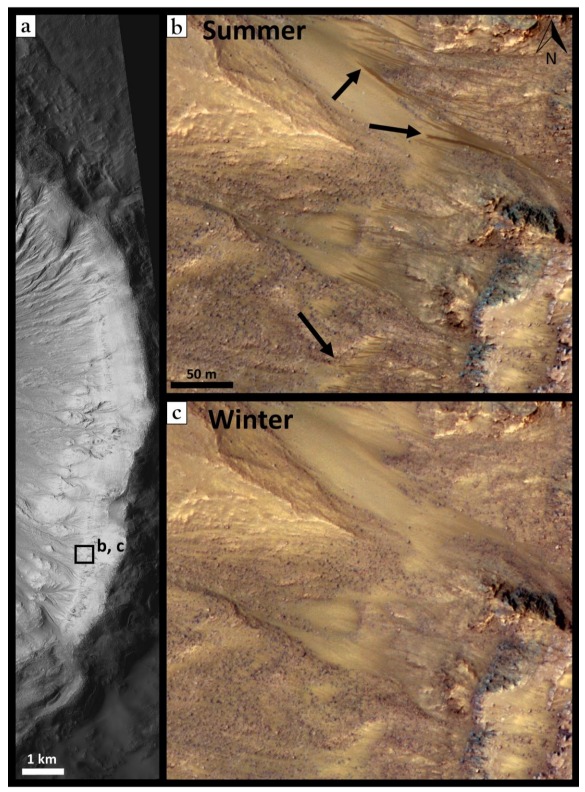The topographic signature of Recurring Slope Lineae (RSL) on Mars
Recurring Slope Lineae (RSL) are dynamic, low-albedo, slope-parallel surface features on Mars that typically occur on steep slopes (>25°). RSL exhibit seasonal dynamics, emerging during late Martian spring, expanding throughout summer, and waning as summer concludes. Despite ongoing debate, the formation mechanisms of RSL remain uncertain, with proposed explanations ranging from water/brines (‘wet theories’) to dry granular flows within a surface dust layer (‘dry theories’). This study aims to discern between plausible RSL mechanisms by analyzing morphological and topographic indicators of rock weathering intensity on RSL and non-RSL adjacent hillslopes within three craters: Corozal (39°S, 159°E), Garni (12°S, 290°E), and Rauna (35°N, 328°E). We hypothesize that heightened rock weathering intensity on RSL hillslopes would argue against the ‘dry’ RSL mechanisms, as RSL dynamics within a thin dust layer are unlikely to substantially affect bedrock weathering. Conversely, the presence of fluids or brines on RSL hillslopes could potentially accelerate rock weathering rates.
To investigate potential variations in rock weathering intensity between RSL and non-RSL hillslopes, we utilized HiRISE images to map fracture characteristics of bedrock outcrops and HiRISE-CTX Digital Elevation Models (DEMs) to assess hillslope-scale variability in topographic attributes, such as slope distribution and curvature. Our findings indicate increased rock weathering intensity on RSL hillslopes at Corozal and Garni, while no discernible differences in weathering intensity were observed between RSL and non-RSL hillslopes at Rauna. Thus, the morphology of the slopes suggests support for a ‘wet’ formation mechanism for at least some Martian RSL occurrences.
